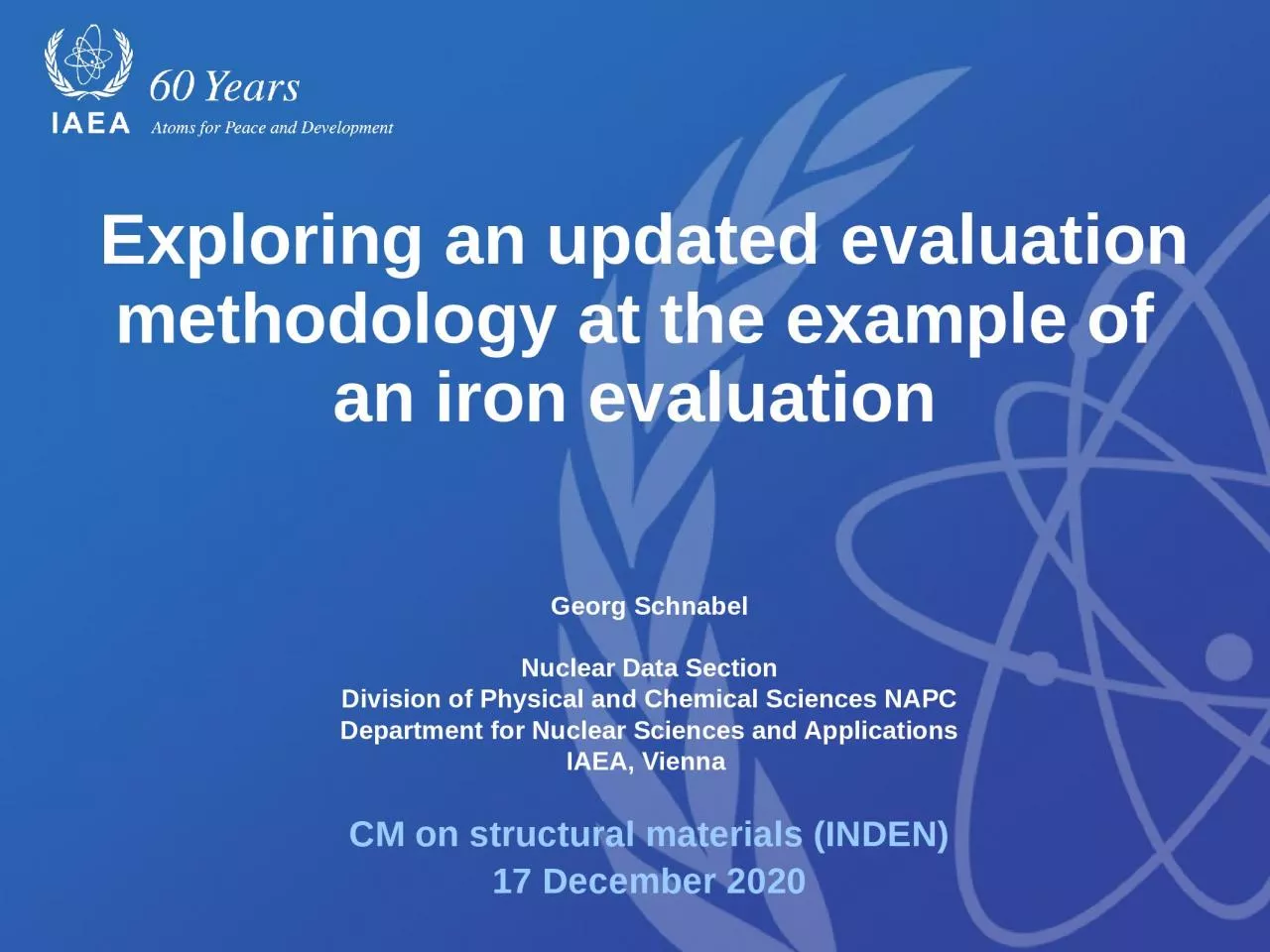

an iron evaluation Georg Schnabel Nuclear Data Section Division of Physical and Chemical Sciences NAPC Department for Nuclear Sciences and Applications IAEA Vienna CM on structural materials INDEN ID: 1044593
Download Presentation The PPT/PDF document "Exploring an updated evaluation methodol..." is the property of its rightful owner. Permission is granted to download and print the materials on this web site for personal, non-commercial use only, and to display it on your personal computer provided you do not modify the materials and that you retain all copyright notices contained in the materials. By downloading content from our website, you accept the terms of this agreement.
1. Exploring an updated evaluation methodology at the example ofan iron evaluation Georg SchnabelNuclear Data SectionDivision of Physical and Chemical Sciences NAPCDepartment for Nuclear Sciences and ApplicationsIAEA, Vienna CM on structural materials (INDEN)17 December 2020
2. OutlineNuclear data evaluation pipelineUpdated methodology at the example of Fe-56 between 800 keV and 5 MeV2/11
3. Nuclear DATA evaluation pipeline (Fe-56)3/11
4. Pipeline overview4/11Conception and software implementation of a nuclear data evaluation pipeline arxiv:2009.00521
5. Experimental data and fit5/11
6. Energy-dependent parameters inside TALYS6/11
7. Technical achievementsDeal efficiently with non-linear modelsUse of large corpora of experimental dataFitting of energy-dependent model parameters (and a lot of them)7/11
8. Open issuesEnergy-dependent parameters are not always enough to fit the data if model is not suitedTelltale signs: Too low uncertainties, lack of coherence between predictions and experimentsEnergy region between 800 keV and 5 MeV of Fe-56 problematic for both R-matrix and optical models8/11
9. updated methodology forfe-56 between 800 kev and 5 MeV9/11
10. Key ideasDo not use R-matrix nor optical modelsUse a very flexible class of functions insteadApply Bayesian inference to propagate information from experiments to constrain function classEnforce important constraints (e.g., smoothness and sum rules); can be regarded as another piece of information provided to Bayesian inference procedure10
11. Gaussian processes (GP)11/11
12. Combining GPs12/11AverageCross sectionHigh-resfluctuationsTrueCross sectionExperimental data+Transformations: resolution, doppler broadening, etc.
13. Example N,TOT (avg)13/11
14. Example N,TOT (avg+hi-res)14/11
15. Example N,TOT (avg+hi-res)15/11
16. Example N,INL (avg)16/11
17. Example N,INL (avg+hires)17/11
18. Example N,INL (avg+hires)18/11
19. Example N,EL (avg, hires)19/11
20. Some detailsMesh sizes (1-5 MeV):Average cross section: 48 pointsHigh-res fluctuations: 10k pointsTrue cross section: 10k pointsExperimental data (1-5 MeV):N,TOT: 4671 (resolution: 1 keV)N,INL: 440 (resolution: 1 keV)N,EL: 10 (resolution: 300 keV)20/11
21. N,TOTN,INLN,ELSeveral channels21/11AverageCross sectionHigh-resfluctuationsTrue cross sectionExperimental dataAverageCross sectionHigh-resfluctuationsTrue cross sectionExperimental dataAverageCross sectionHigh-resfluctuationsTrue cross sectionExperimental data
22. Example N,TOT22/11
23. Example N,TOT (avg+hires)23/28
24. Example N,TOT (avg+hires)24/28
25. Example N,INL (avg)25/11
26. Example N,INL (avg+hires)26/11
27. Example N,INL (avg+hires)27/11
28. Example N,EL (avg)28/11
29. Example N,EL (avg+hires)29/11
30. SummaryGPs can be used to fit both (and jointly) average cross sections and highly fluctuating cross sectionsTentative application on neutron-induced reactions of Fe-56 between 800 keV and 5 MeVSome important features still need to be implemented, e.g., positivity constraints and proper handling of relative uncertainties to avoid PPP30/11